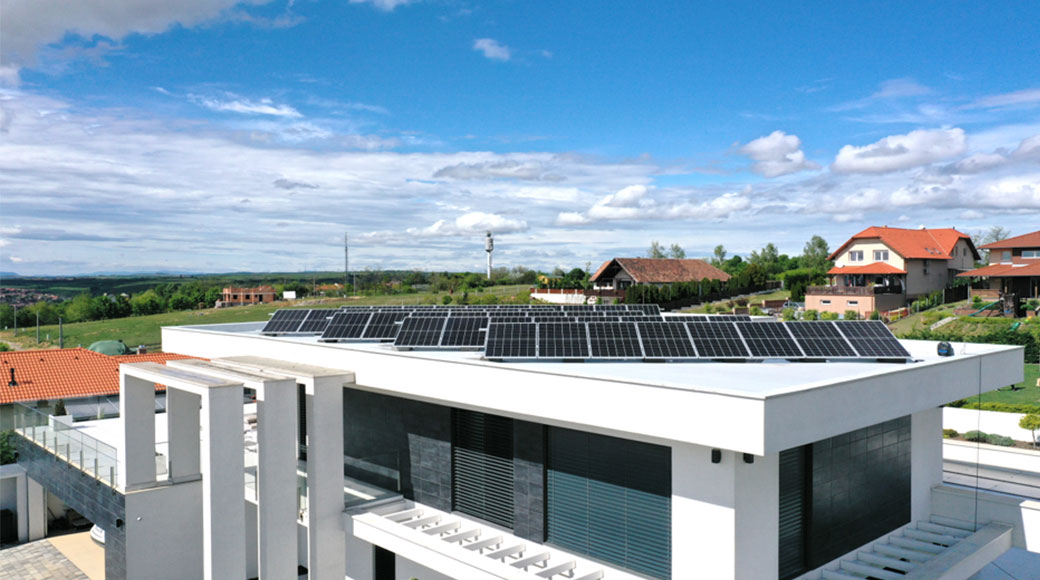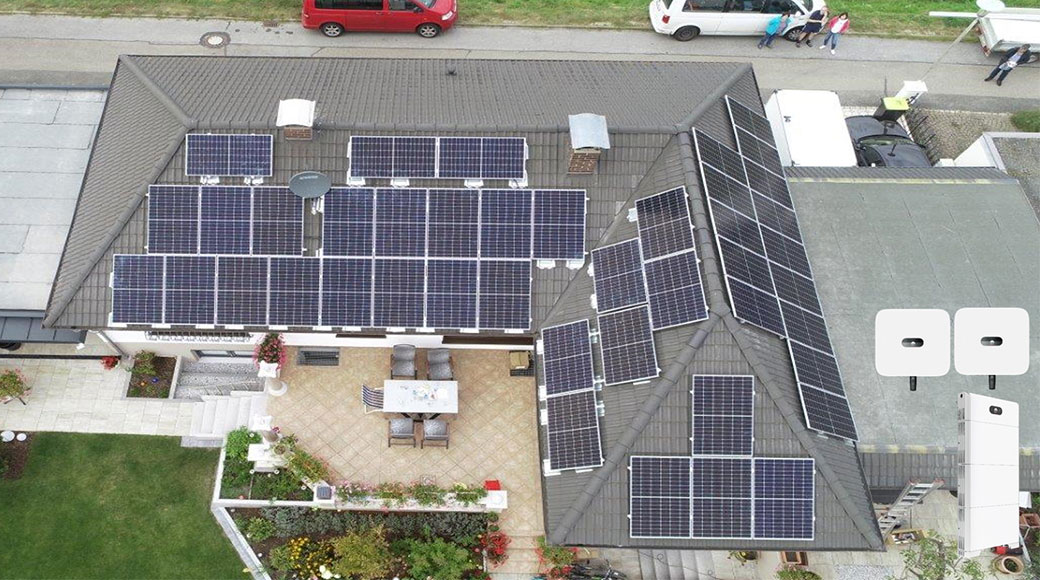Solar Panels Revitalize the Flora and Life in the Kubuqi Desert
The Kubuqi Desert was once the source of sandstorms sweeping over the North China, but with the development of clean energy, it is now full of vitality. The establishment of the Junma Solar Power Station helps revitalize the desert so that we can see the beautiful scene of “the sunset and the birds flying together” as described in an old poem. The Junma Solar Power Station, just like a galloping horse, has become the front runner in the nationwide photovoltaic industry.
Kubuqi, in Mongolian, means "the bow string".
In the north of the Ordos Plateau, Inner Mongolia lies China's seventh largest desert. Stretching over 400 km from east to west and 50 km from north to south, the Kubuqi desert is only 715 km away from Beijing, and was often the source of sandstorms in China's capital.
Today, local shrubs and bushes can be seen in the Dalad Banner region of the deep interior of the Kubuqi Desert. With a keen eye, you may even catch a glimpse of hare or a fox. What has happened?
On the Kubuqi's horizon appears a galloping horse made up of over 196,000 PV modules. It is the Junma Solar Power Station. Junma means "fine horse" in Chinese. The Junma Solar Power Station not only powers the region with sustainable energy, it is also part of a larger revitalization program fighting desertification.
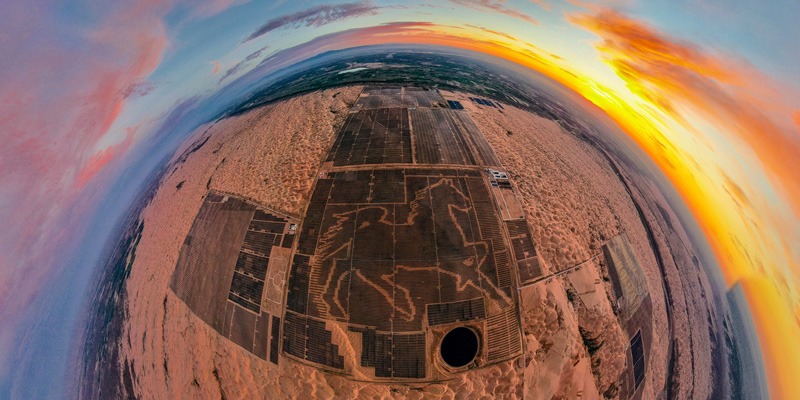
PV beyond energy — controlling sandstorms and revitalizing the land
"When I was little, the sky was yellow, the sand hurting my face," recalls Zhao Jinlong, a local villager who works in O&M at the Junma Solar Power Station. " Now, after work, I see the sun fall behind the horizon — it is beautiful," he adds.

Thirty years ago, Kubuqi was ravaged by wind and sand, lacking basic infrastructure like water, electricity, and roads. Farmers and shepherds lived in extreme poverty, relying on the few plants that took root in the harsh desert. Since then, the Chinese Government worked alongside local residents and several private companies to revitalize the area and reverse desertification through a sand control model. The project has become globally recognized, receiving favorable feedback from the United Nations (UN).
In September 2017, the sixth Kubuqi International Desert Forum and the 13th Conference of the Parties to the UN Convention to Combat Desertification were held in Ordos. At the conference, the UN released the Report on Ecological Wealth Creation in China's Kubuqi Desert, which acknowledged the greening of the 6253 square kilometers of Kubuqi. According to the report, the model has created an ecological wealth of CNY500 billion and 102,000 people are lifted out of poverty.
Following China's favorable policies for PV construction issued in 2017, the Dalad Banner region decided to build the Dalad PV power base with an installed capacity of 2 million kW. The CNY15 billion project was kicked off in May 2018, led by SPIC Nei Mongol Energy. The first phase of the project was completed in record time — it took just 133 days to build a 300,000 kW PV plant. During the peak of construction, there were some 5500 people working on site.
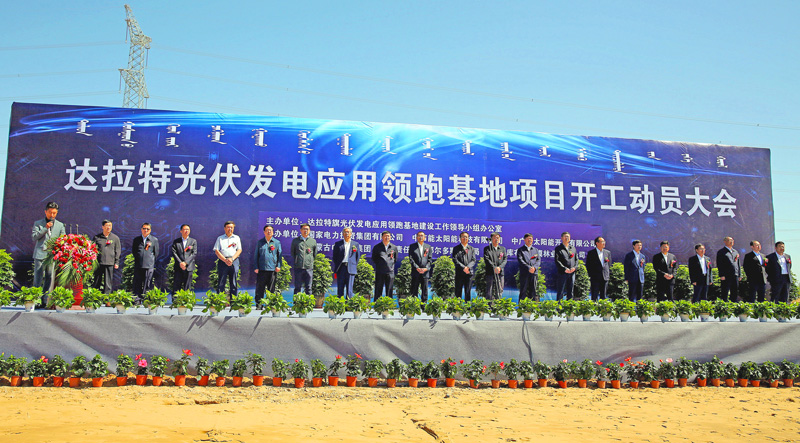
From the onset, SPIC Nei Mongol Energy adopted a hybrid model to generate electricity using PV while shading the sandy areas with PV panels to control the sand and rehabilitate the local flora. As a result, herbs and shrubbery can be grown between the rows of PV panels.
Desert control is not an easy project and some of the first attempts failed. At the beginning, SPIC Nei Mongol Energy planted jujube trees brought over from Ningxia. However, their survival rate was less than 10%. Then, the company changed its strategy and planted desert false indigo around the Shuijinghu PV Power Station instead. These plants grew surprisingly well, and after harvest were fed to cattle and sheep from the nearby farms during the winter. The next spring, the plants were flourishing again.
The project manager told us: "At the time, we saw nothing but sand along the Xingba Highway. There were no trees, houses, electricity — nothing. But now, we have many birds and small animals, and we can even hear magpie twittering on the PV panels.
'' Li Shuaikun, who is responsible for production safety management, recalls the power plant construction: "We started to level the site in April 2018. The project timeline was tight. We were setting up piles and preparing grids on the ground. At the time, there was no vegetation at all. Now, Mongolian milk vetch, jujube trees, forage for cattle and sheep, even local shrubs are growing tall. Last year we planted watermelons on the side of the Shuijinghu PV Power Station, but the birds ate them.''
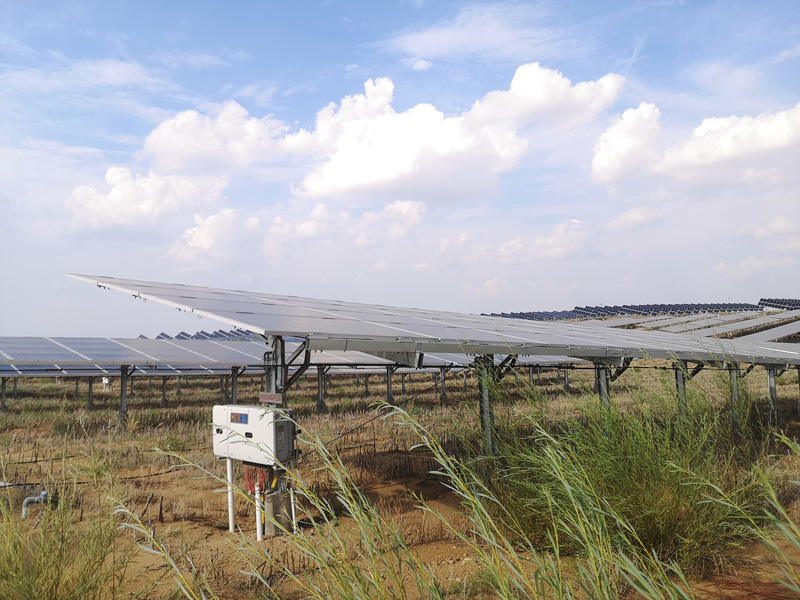
PV panels help reduce ground wind speeds by up to 50%. Sand fixation grids and growing plants have also helped to control the sandstorms. Normally it takes a decade to achieve such a sand fixation effect. But here it took only four years.
In addition to environmental benefits, the PV plant also creates jobs for local villagers, such as planting cash crops and O&M. They have begun animal husbandry, since there are now plants to feed the animals. Plus, the desert attracts tourists, so locals have set up hotels, supermarkets, restaurants, guesthouses, and local specialty shops. Some even use online platforms for e-commerce.
Kubuqi is prospering, so more and more people like Zhao Jinlong are returning to their hometown to work and raise their family.
Smart PV — assuring stable operations with intelligent technologies
The Junma Solar Power Station uses Huawei's FusionSolar solution, including smart string inverters, MBUS, Smart I-V Curve Diagnosis, and Smart PV Management System. "We have cooperated a lot with Huawei over the years, and their equipment offers better quality than other similar string inverters. The best thing is their heat dissipation performance, which is better than many other vendors. It is easy to damage devices with fans in an area like this, because sand can penetrate them. Huawei inverters don't have fans, so they are less likely to get damaged," explains a project manager from the Junma Solar Power Station.
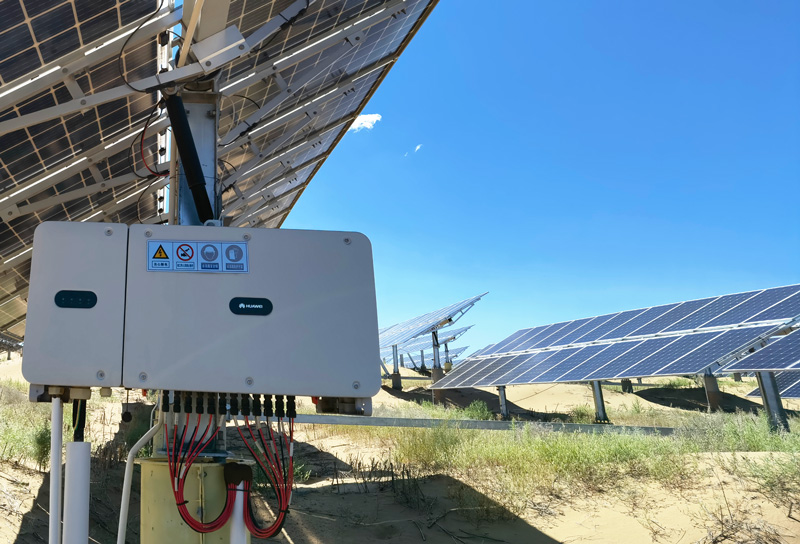
There are currently 3300 smart string inverters that are running stably at the Junma Solar Power Station. The inverters use multiple MPPT circuits to address string mismatch. The conversion efficiency at full load is up to 99%, achieving higher energy yields. The inverters are also rated IP66, the highest protection level in China. The device has no fuse, fan, or vulnerable parts, thus ensuring high reliability in harsh environments like heat and sandstorms in a desert.
Huawei inverters feature Smart I-V Curve Diagnosis 4.0, which has revolutionized O&M. The process is similar to a medical CT scan, displaying all plant health problems on a large dashboard at the O&M center with just one click. The system can accurately locate PV string faults, automatically generate diagnosis reports, and provide energy yield loss evaluation and rectification suggestions. All this helps improve O&M efficiency and energy yields.
"Currently, the system can identify about 14 types of PV string faults, covering more than 80% of major faults. It takes about 20 minutes to scan the entire 300,000 kW power station. In addition, drone inspection and wearable devices are used. Despite the size of the project, we only need about 30 O&M staff, because so many processes are automated," said the plant owner.
Award-winning performance
Since its completion at the end of 2018, the Junma Solar Power Station has won many awards. It won the China Energy Project Innovation Award in 2018, set a Guinness World Record with the largest solar panel image in the shape of a horse in 2019, and won the National Quality Engineering Award in December 2021.
By the end of November 2022, the Junma Solar Power Station had generated a total of 2.543 billion kWh of green electricity, which is equivalent to saving 840,000 tons of coal and reducing 2.03 million tons of carbon dioxide emissions. It also helped green about 10.7 square kilometers of desert areas.
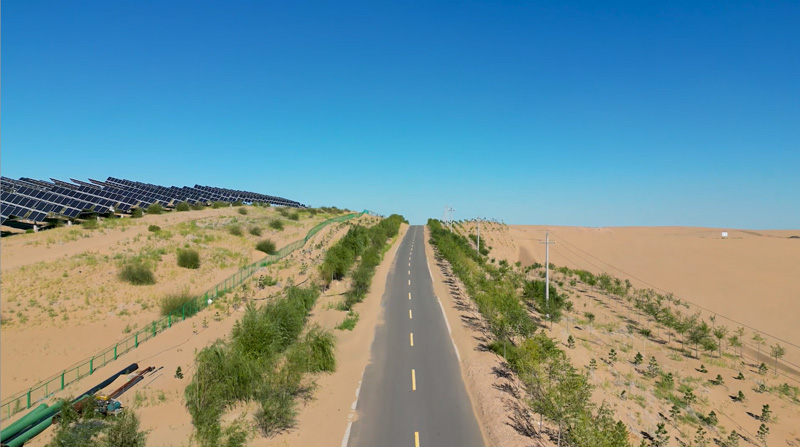
In June 2021, the 1 million kWh Dalad Banner PV base was completed, and is expected to generate 2 billion kWh of green electricity each year and reforest another 40 square kilometers of desert.
As the project implementation continues, the Dalad Banner envisions a future with integrated clean energy, organic agriculture and forestry, and tourism. The plan is to complete four bases: a modern clean energy demonstration base with an annual energy yield of 4 billion kWh, organic agriculture and forestry base of 133.3 square kilometers, desert research and education base with an annual reception of 150,000 tourists, and three-industry integration demonstration base with an annual output value of CNY2 billion.






